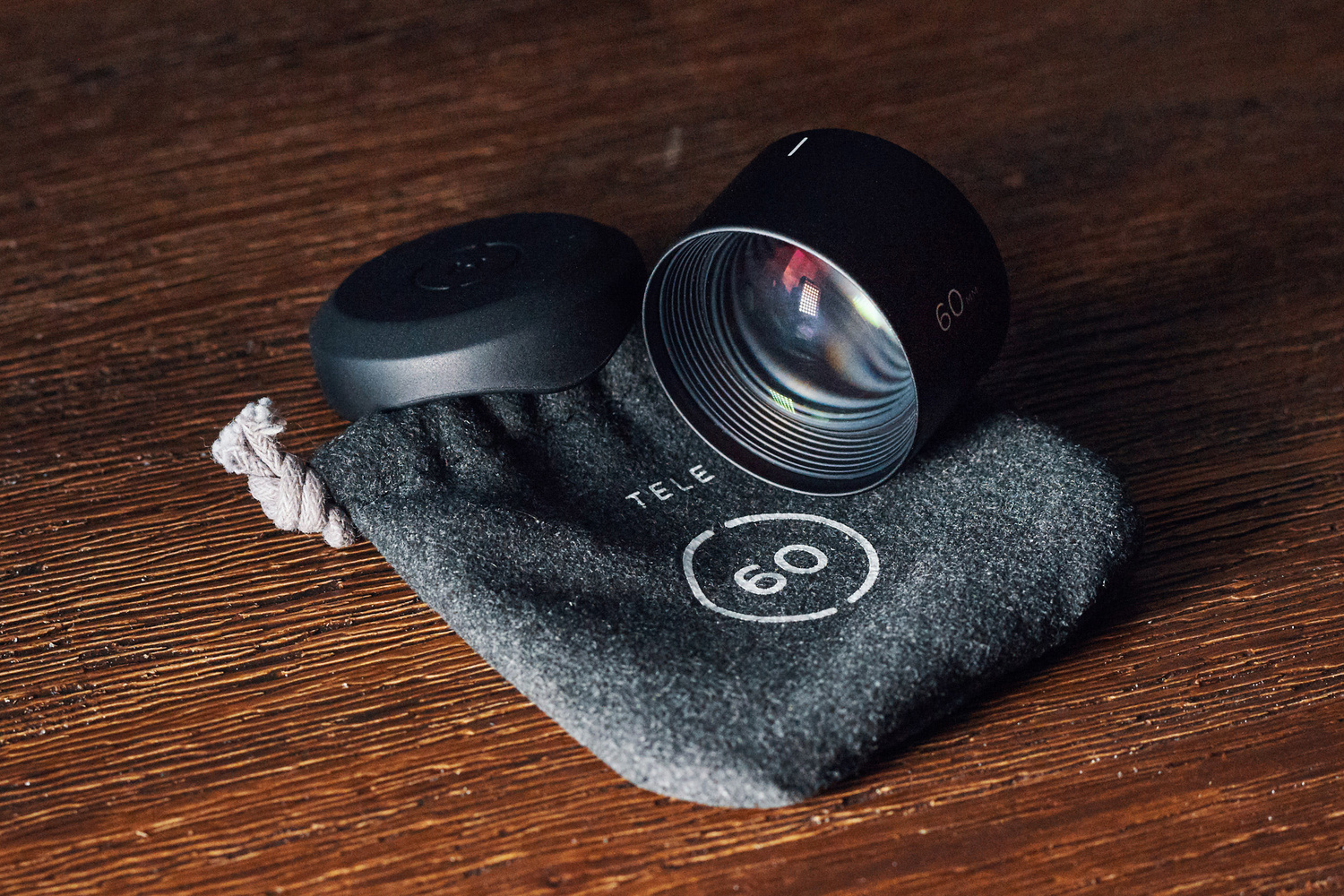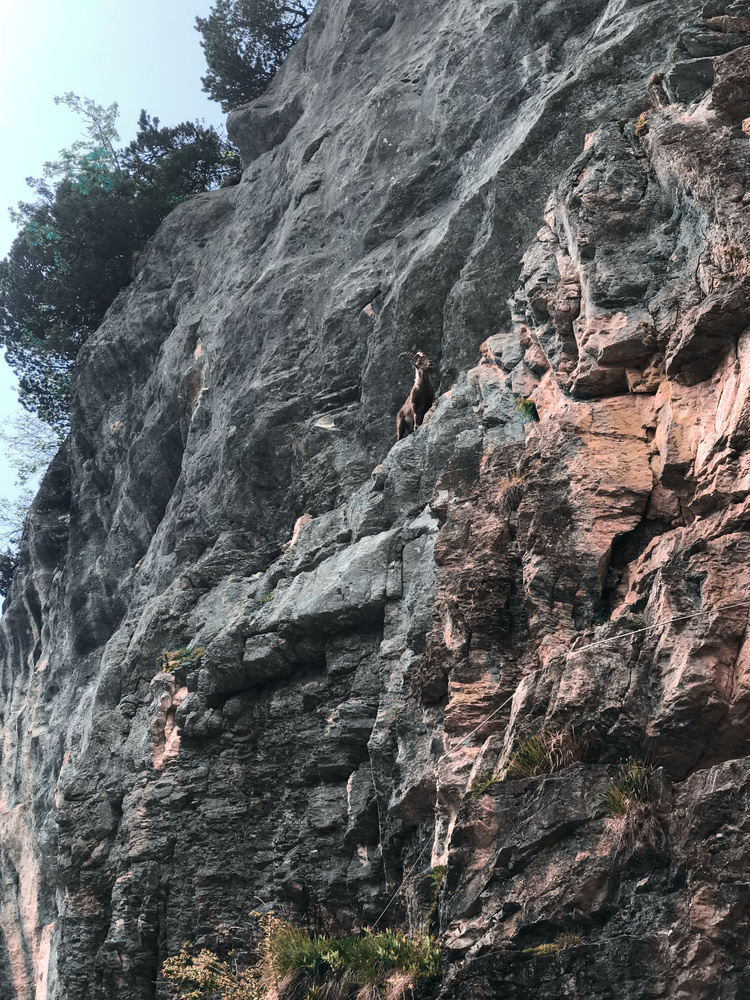Smartphones have become so good at photography and videography that they can even replace a DSLR in some situations. Moment has pushed this fact even further by creating beautiful lenses such as the Tele Portrait lens which I review for you in this article.
A couple of weeks ago, I wrote a review of the Moment Wide Angle lens. I truly love this lens, and I don’t go anywhere without it. The second Moment lens I own is the Tele, and it’s a great complement to the wide angle even if you own a smartphone with dual cameras.
Build Quality
Similarly to all other Moment lenses, it comes with a small pouch and a front element cap cover. The pouch is necessary if you plan on taking the lens with you anywhere and put it in your pocket. It’ll keep most of the dust from getting into the rear part of the lens which doesn’t have a cap.

The lens itself is extremely well built and feels solid. It’s made of metal and glass and seems to be a lot more rugged than any kit or cheap lens for DSLRs. The Tele like other Moment lenses require a case to mount on your phone. Cases exist for most current smartphones including iPhone 7, iPhone 7 Plus, iPhone 8, iPhone 8 Plus, iPhone X, Google Pixel, Google Pixel XL, Samsung Galaxy S8, and Samsung Galaxy S9. Two different case models are available, a basic one with wood or black canvas on the back or one with a battery to charge your phone and a shutter button on the side.

Mounting a lens on the case is similar to how you’d snap your glass on your DSLR: insert, rotate, and done. The case is also easy to put on or remove if needed. I tried both cases and loved the look of the basic one with the wooden back. The battery case is fantastic too, but due to limitations from Apple, it makes the use of earphones other than Bluetooth ones impossible. The case also had to be reset on a regular basis — every one to two weeks — to keep working, even with the latest updates. Nonetheless, if I had the choice of only one case, I’d keep the battery one.
Performances
The Tele is a 60mm equivalent. On older smartphones with a single lens, it is more of a standard than telephoto field of view you’ll get. However, on more recent smartphones, you’ll be able to put it on your longer lens and get an even bigger reach. The Tele would, at first, seems like a better option for owners of most recent smartphones. However, it’s actually just as good for people with older models such as the iPhone 6s as it gives them the option of having a longer lens without having to buy a new phone. The following image was shot using the longer lens of the iPhone 7 Plus.
For comparison, here's another shot below with the iPhone 6s Plus using the only camera it has. The left shot is without the Moment lens, and the right is with it. Notice how much more vignetting the lens produces on the default camera compared to the iPhone 7 Plus shot above.
[beforeafter label1="Without Moment Tele" label2="With Moment Tele"]

Such a lens cannot make the image quality better. It can only change the field of view, give a distinctive look to the pictures, or worsen the quality of a shot. In this case, the Tele is a mix between the three depending on how you plan to use it. First, yes, as I said before, it indeed changes your field of view as its name implies. Second, it alters the look of your images as the center of the frame is sharp and the rest is a bit blurry giving a more dreamy feel to the image, perfect for portraiture or isolating a subject.
Lastly, depending on the light conditions and the scene you photograph, purple fringing will be evident. On regular use, I’d say about 40 percent of my shots suffered from noticeable purple fringing. While it’s easy to remove on a computer using Capture One, Lightroom, or Photoshop, it’s not as straightforward on a smartphone; Lightroom Mobile can do it but it doesn't always work perfectly.

Shot on an iPhone 6s Plus. The edges are noticeably soft and the strong contrast transitions suffer from purple fringing. The vignetting is due to the iPhone 6s Plus camera; it wouldn't be this strong with the iPhone 7 Plus on the dual camera.
The vignetting was also quite strong in some of the images I shot with the lens. I wouldn’t say it’s a downside of this lens as it is advertised as a portrait lens. In this scenario, the vignetting helps to focus the viewer’s eye on the subject. If you shoot landscape, it may be a problem, especially if you don’t process your pictures taken with a smartphone. Last note, for bokeh lovers, no, this lens won’t transform your iPhone bokeh into something so dreamy that you’d want to sell your 85mm f/1.4. It does help a bit when shooting portraits and subject from a close distance though.
Price
The lens alone costs $89.99, which is $10 cheaper than the Wide Angle lens. However, on top of the lens, you’ll have to take into account the fact that you need a compatible case. The minimal costs $29.99 while the battery case is $99, or sold for $90 as a kit with one lens on the official Moment shop.
The price may seem a bit high for a smartphone accessory, but keep in mind the lens built quality is similar to a good DSLR lens. Also, if you shoot a lot with your smartphone, it could be one more step towards working more with your phone and less with your DSLR.
What I Liked
- Increased reach.
- Compatible with dual lens phones as well for an even greater reach.
- Blurred edges but sharp center which makes your subject in portrait stand out and gives a distinct look to your images.
- Easy to mount and use.
- Top-notch build quality.
- Comes with a pouch and front cap cover.
- Standard photo case is affordable and looks great.
- Battery case doubles your phone’s battery life which is great when shooting a lot of pictures or videos.
What Could Be Improved
- Strong vignetting, which can actually be a benefit for portraiture.
- Noticeable purple fringing.
- No rear cap cover to protect the back of the lens from the dust.
- The battery case cannot be used with lightning headphones. It requires you to use a wireless system to listen to your music.
Conclusion
The Moment lenses are outstanding and a must-have for any smartphone photographer or for photographers who travel a lot but want to find a lighter alternative to their DSLR. If you shoot video, it’s just as good, even more so when used in combination with FiLMiC; you could use your phone to shoot vlogs and behind the scenes content easily without any additional cost.
While the Wide Angle lens was, in my opinion, an excellent option for any photographer, the Tele targets more of a niche market. Its "issues" will be advantages for some photographers, while it will prevent others from getting it. If you shoot a lot of portraits, it’s a great option. If you shoot mostly landscape, I’d say it’s great as long as you process your images a tiny bit and can live with the soft edges.
![Get More Reach Out of Your Smartphone Camera With the Moment Tele Portrait Lens [Review]](https://cdn.fstoppers.com/styles/large-16-9/s3/lead/2018/06/best-lens-for-iphone.jpg)








Great post. I'm looking forward to picking up a wide angle lens from them for video soon.
The wide angle lens is frankly incredible. However I find the tele lens extremely soft in comparison, to the point I thought something was wrong with it
Smartphones essentially killed the point and shoot...but now it almost seems like we are trying to turn the smartphone 'into' a point and shoot. Am I the only one that thinks this way?
It seems like the phone features of smartphones are less and less important every day. Multimedia, especially photography and videography have taken over. But I don't think it's for the worst. Point and shoots were great, but then being able to combine your video game console, with a good camera, and a phone is much better, isn't it?
I have the Moment Wide and the Tele reviewed here and love them both. I have the Plus phone, so I put the wide on the shorter camera and the tele on the longer camera and have an optical range of ~16mm-115mm (equiv.). Every specimen is different and as it happens my copy is pretty clear and bright even at the edges. I'm also very impressed with the lack of distortion on both.
I returned the Moment tele and bought the Sirui tele (uses same mount). The Moment lens is extremely soft except for the center, and others have complained about the issue as well. The Moment wide lens, however, is fantastic. I should be receiving the anamorphic lens next month.